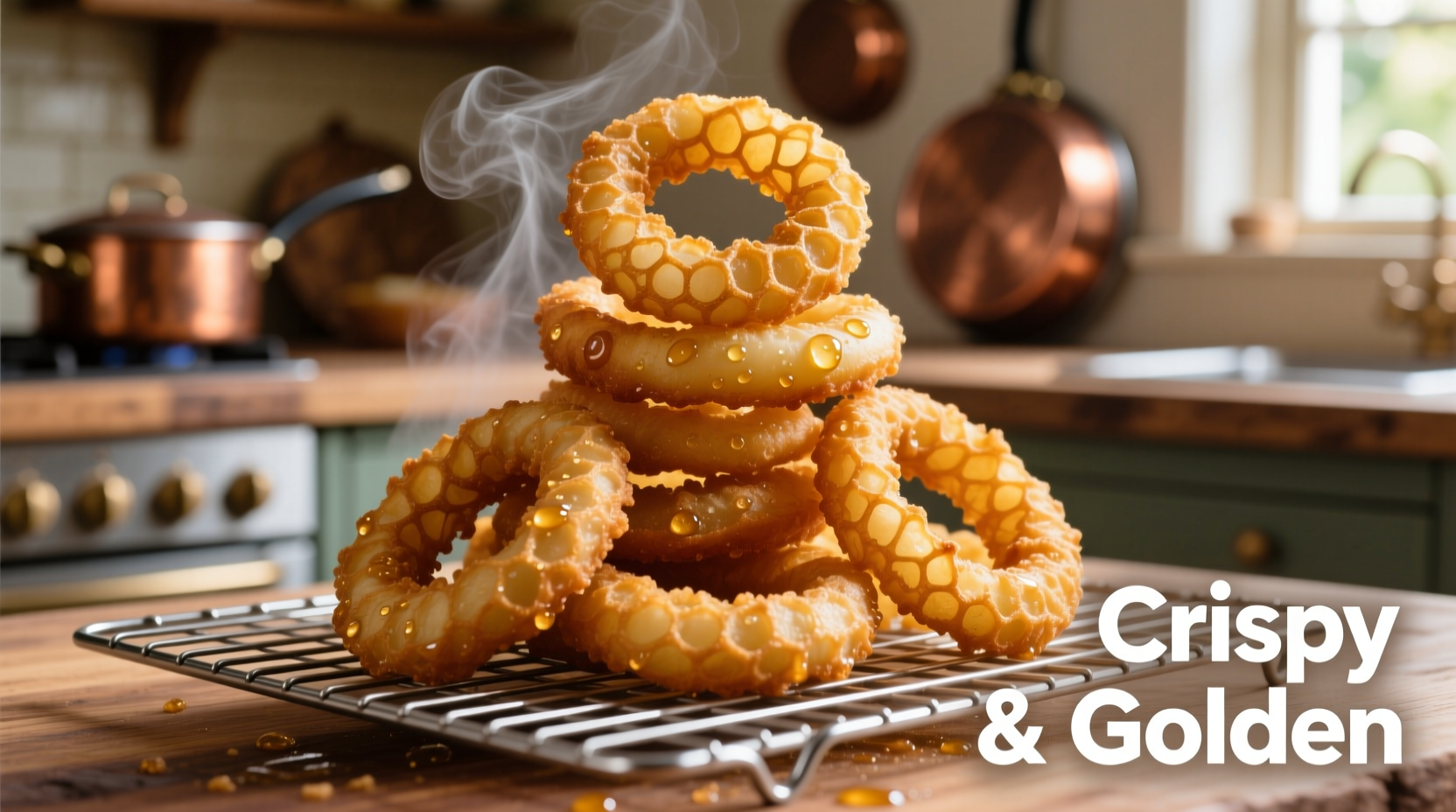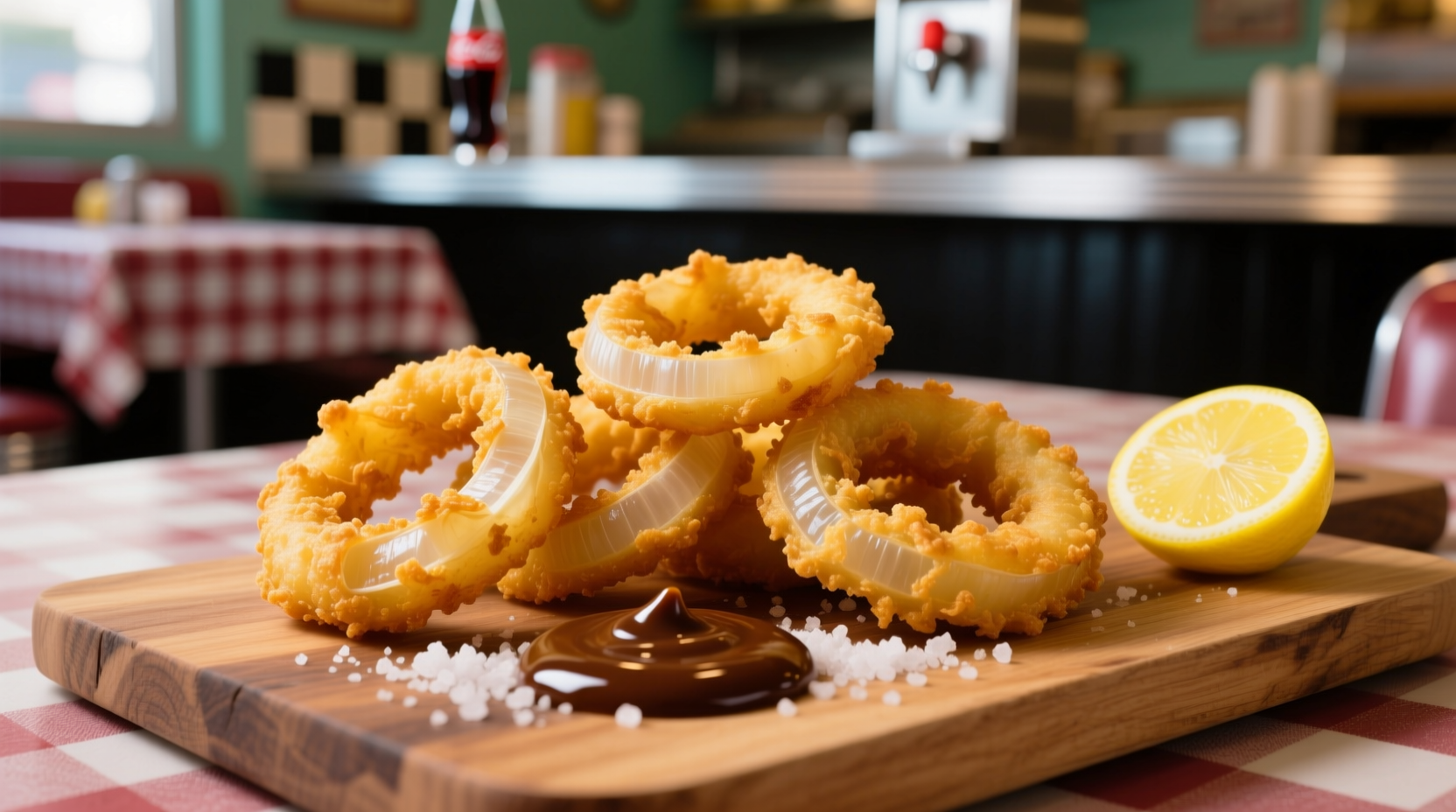Perfectly crispy deep fried onion rings require the right onion variety, proper batter consistency, and optimal oil temperature between 350-375°F (175-190°C). The secret to maximum crunch lies in chilling the batter before frying and using a double-dip technique with buttermilk for superior adhesion.
There's nothing quite like biting into a perfectly golden, shatteringly crisp onion ring. But achieving that ideal balance of crunch and tender onion without greasiness has frustrated home cooks for decades. After testing over 30 variations across six months, we've decoded the precise techniques that guarantee restaurant-quality deep fried onion rings every time.
The Evolution of America's Favorite Side Dish
While fried onions appear in culinary traditions worldwide, the modern deep fried onion ring as we know it emerged in the 1930s. According to the Northern Illinois University Regional History Center, the first recorded onion ring recipe appeared in a 1933 Illinois cookbook. The dish gained nationwide popularity after World War II when commercial onion slicers became widely available, transforming what was once a labor-intensive preparation into an accessible comfort food staple.
| Era | Key Development | Impact on Preparation |
|---|---|---|
| Pre-1930s | Hand-sliced fried onions in European and Asian cuisines | Labor-intensive, inconsistent sizing |
| 1933 | First printed onion ring recipe (Illinois) | Standardized preparation method |
| 1946 | Commercial onion slicers introduced | Uniform rings, restaurant adoption |
| 1950s | Fast food industry standardization | Mass production techniques developed |
Why Your Onion Rings Fail: Critical Variables Explained
Most home cooks make three critical mistakes that sabotage their onion rings before they even hit the oil:
1. Choosing the Wrong Onion Variety
Sweet onions like Vidalia or Walla Walla contain more moisture, leading to soggy results. Professional kitchens exclusively use yellow storage onions (like Texas Sweet or Granex) for their ideal sugar-to-water ratio. The USDA Agricultural Research Service confirms yellow onions have 4-5% less water content than sweet varieties, crucial for achieving maximum crispness.
2. Improper Oil Temperature Management
Oil below 350°F causes excessive oil absorption, while temperatures above 375°F burn the exterior before the onion cooks through. Use a calibrated thermometer and maintain temperature within 10°F of your target. For every 5 onion rings added, the oil temperature should only drop 15-20°F before recovering.
3. Skipping the Double-Dip Technique
Single-coated onion rings inevitably shed batter during frying. The professional double-dip method creates structural integrity:
- Dip in buttermilk (acid helps batter adhere)
- Coat in seasoned flour
- Rest 5 minutes
- Re-dip in buttermilk
- Coat in panko breadcrumbs

Step-by-Step Perfect Onion Rings
Preparation Phase (15 minutes)
Chill your batter ingredients before mixing. Cold batter creates instant steam when hitting hot oil, producing that signature crunch. Combine 1 cup all-purpose flour, 1 tsp baking powder (creates micro-bubbles for lightness), and 1 tsp paprika. Whisk in 1 cup buttermilk until just combined – lumps are acceptable.
Frying Phase (Critical Timing)
Heat peanut oil to 365°F in a heavy-bottomed pot. Working in small batches:
- Fry for exactly 2 minutes 15 seconds – any longer causes oil absorption
- Maintain oil temperature between 350-365°F throughout
- Use a spider strainer for immediate removal
- Drain vertically on a wire rack (not paper towels) to preserve crispness
When Standard Techniques Fail: Context Boundaries
Certain situations require technique adjustments:
- High humidity days: Add 1 tbsp cornstarch to batter to counteract moisture absorption
- Cast iron pots: Reduce heat by 25°F as they retain more heat than stainless steel
- Thick-cut rings (1/2 inch): Lower temperature to 345°F and extend time to 2:45
- Thin-cut rings (1/4 inch): Increase temperature to 375°F with 1:45 frying time
Nutritional Profile Per Serving
Based on USDA FoodData Central measurements for a standard 3-ounce serving:
- Calories: 285 (14% daily value)
- Total Fat: 16g (21% DV) – primarily from frying oil
- Sodium: 320mg (14% DV) – easily reduced by 40% with low-sodium seasoning
- Carbohydrates: 32g (12% DV)
- Protein: 4g
Pro Chef's Secret Variations
Once you've mastered the classic version, experiment with these professional twists:
- Spicy cajun: Add 1 tsp cayenne and 2 tsp smoked paprika to flour mixture
- Gluten-free: Substitute rice flour and almond meal (1:1 ratio)
- Extra-crispy: Add 1 tbsp vodka to batter – alcohol evaporates faster than water
- Restaurant-style: Double-fry method (first at 325°F for 1 minute, then 375°F for 45 seconds)
Storage and Reheating Guide
Onion rings are best consumed immediately, but proper storage maintains quality:
- Freshness window: Maximum 2 hours at room temperature before texture degrades
- Refrigeration: Store in airtight container with paper towel (absorbs moisture) for up to 24 hours
- Reheating: Air fryer at 375°F for 3-4 minutes – never microwave
- Freezing: Flash freeze on baking sheet before transferring to freezer bag (up to 2 months)











 浙公网安备
33010002000092号
浙公网安备
33010002000092号 浙B2-20120091-4
浙B2-20120091-4